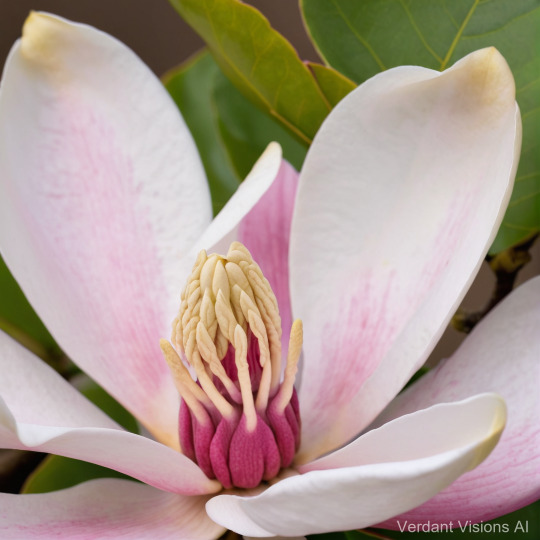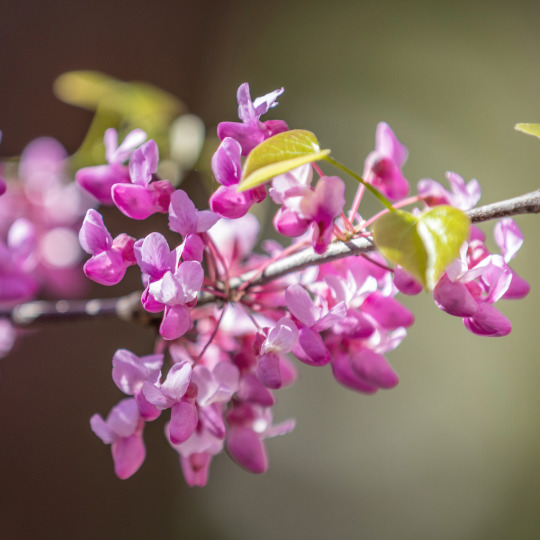#SpringtimeSplendor
Explore tagged Tumblr posts
Photo







Lost in an enchanting world where spring whispers secrets to the petals of blooming flowers. Each delicate bloom is a masterpiece painted by the hand of nature, a symphony of colors dancing in the gentle breeze. Let yourself wander through this floral paradise and feel the magic of the season awaken your soul. 🌸🌿
#EnchantingSpringFlowers#BlossomingBeauty#FloralFrenzy#BloomsInBloom#SpringtimeSplendor#MagicalFlowerGarden#BotanicalBliss#NaturePhotography#CaptureSpringBlooms#BloomAndGrow
0 notes
Text
Embrace Native Trees: The Eastern Redbud (Cercis canadensis)

Adding a splash of color to your landscape has never been easier with the Eastern Redbud (Cercis canadensis). This stunning native tree can transform your garden with its vibrant pink flowers and charming heart-shaped leaves. Let’s dive into why the Eastern Redbud is the perfect addition to your backyard and how it can benefit both you and local wildlife.
Springtime Splendor
Imagine your garden waking up from winter with a burst of color. The Eastern Redbud dazzles in early spring, its branches adorned with small, vibrant pink flowers before the leaves even emerge. These blooms create a breathtaking display that can turn any yard into a picturesque scene, making the Redbud a favorite among gardeners looking to add beauty and charm to their outdoor spaces.
Wildlife Haven
But the Eastern Redbud isn’t just about looks. It’s also a fantastic choice for creating a wildlife-friendly garden. Here’s why:
Pollinator Paradise: The vibrant flowers attract a variety of pollinators, including bees and butterflies. By planting a Redbud, you’re helping support these crucial creatures, which play a vital role in our ecosystems.
Bird Buffet: Once the flowers fade, the Redbud produces seed pods that are a valuable food source for birds. Sparrows, finches, and other species will thank you for this delicious addition to their diet.
Planting and Caring for Your Eastern Redbud
Ready to bring this beautiful tree into your garden? Here are some tips to ensure your Eastern Redbud thrives:
Choose the Right Spot: Eastern Redbuds prefer well-drained soil and can tolerate both full sun and partial shade. Make sure you plant your tree where it has enough space to grow to its full size, which can be up to 30 feet tall and wide.
Watering: Young Redbuds need regular watering, especially during dry spells. Once established, they are relatively drought-tolerant, but a little extra water during hot, dry periods can help them stay healthy.
Mulching: Apply a layer of mulch around the base of your tree to retain moisture, regulate soil temperature, and suppress weeds.
Pruning: Prune your Redbud in late winter or early spring to remove any dead or diseased branches and to shape the tree. This helps maintain its health and beauty.
Why Choose Native?
Planting native trees like the Eastern Redbud has numerous benefits. They are well-adapted to local conditions, require less maintenance, and support local wildlife. By choosing natives, you’re not only enhancing your garden’s beauty but also contributing to a healthier environment.
Conclusion
The Eastern Redbud is more than just a tree; it’s a symbol of the beauty and resilience of nature. By planting one in your garden, you’re making a statement about the importance of preserving our natural heritage and supporting local ecosystems. So why wait? Add a splash of color and a touch of nature’s magic to your landscape with an Eastern Redbud.
For more tips on sustainable living and gardening, be sure to explore our other blog posts. Happy planting!
#EasternRedbud#NativeTrees#SpringtimeSplendor#WildlifeGarden#PollinatorFriendly#SustainableGardening#GardenInspiration#PlantNative#EcoFriendlyGardening#TreePlanting#BackyardBliss#GardenTips#NatureLovers#GreenLiving#BeautifyYourYard#greenguidetips
0 notes
Text
What You Need to Know Before You See the Woodburn Farm Tulips

Attention all nature lovers. Before you head to the captivating Woodburn Farm Tulips, check out these must-know tips to make your visit truly unforgettable.
0 notes
Text
What You Need to Know Before You See the Woodburn Farm Tulips

Get ready for a blooming good time. Here's everything you need to know before you visit the enchanting Woodburn Farm Tulips.
0 notes
Photo

"Where there is love there is life." - Mahatma Gandhi. In the tender buds of spring, I witness love blooming in every corner, breathing life all around. Ironically, it's nature that reminds us - to live is to love, and to love is to truly live.
#CherryBlossomMagic#SpringBlooms#PinkPetals#NatureInBloom#SakuraDreams#SpringtimeSplendor#BlossomBeauty#FloralFever#CherryBlossomSeason#InLoveWithNature
0 notes
Photo

Embracing the dance and sway of the wind's soft whispers, surrendering to the warm, tender kisses of the sun, and letting the celestial stars chart the course of our deepest dreams. This vibrant kaleidoscope of nature's wisdom unravels a profound truth as we soak in Spring's gentle hush. It teaches us an eternal rhythm of life – a choreography of growth, transformation, and innocent resilience. As trees stir from their winter slumber and petals reemerge in tender blushes, we are gently reminded to adhere to our own seasons of change, to bloom with courage, and to dance unapologetically with life's glorious rhythm. Just as the soul, limitless and unbounded, fearlessly soars, nature unfolds her wordless wisdom in the silent hum of spring awakening.
#CherryBlossomMagic#TranquilMeadow#ColorfulFlowers#GentleBrook#SpringInBloom#NatureInspiration#CherryBlossomDreams#BlossomPhotography#TranquilityInNature#SpringtimeSplendor
0 notes
Photo




Embrace the dance of spring blossoms and buds, as nature unveils its splendid symphony of renewal. Each petal unfurling, each bud awakening, whispers of a timeless beauty and gentle strength. Let your soul be captivated by the serenity of this season's delicate yet powerful transformation. 🌸🌿 #NaturePhotography #SpringBeauty
#SpringBlossoms#SpringBuds#FloralPhotography#NatureInBloom#BotanicalBeauty#FlowerMagic#BlossomWatch#BuddingSeason#SpringtimeSplendor#PetalsAndPromises
1 note
·
View note
Photo



As the world awakens from its wintry slumber, the blooming beauties of spring emerge like strokes of magic upon the canvas of nature. Each delicate petal and vibrant hue whispers tales of renewal and resilience, inviting admiration and wonder. Let us embrace the serene splendor of this season and revel in the exquisite dance of life unfolding before our very eyes. 🌸🌿 #NaturePhotography #SpringBlooms
#SpringBlooms#FloralPhotography#SpringFlowers#NatureInBloom#BotanicalBeauty#SpringtimeSplendor#FlowerPower#FlowerMagic#BlossomSeason#FlowerPhotographer
0 notes